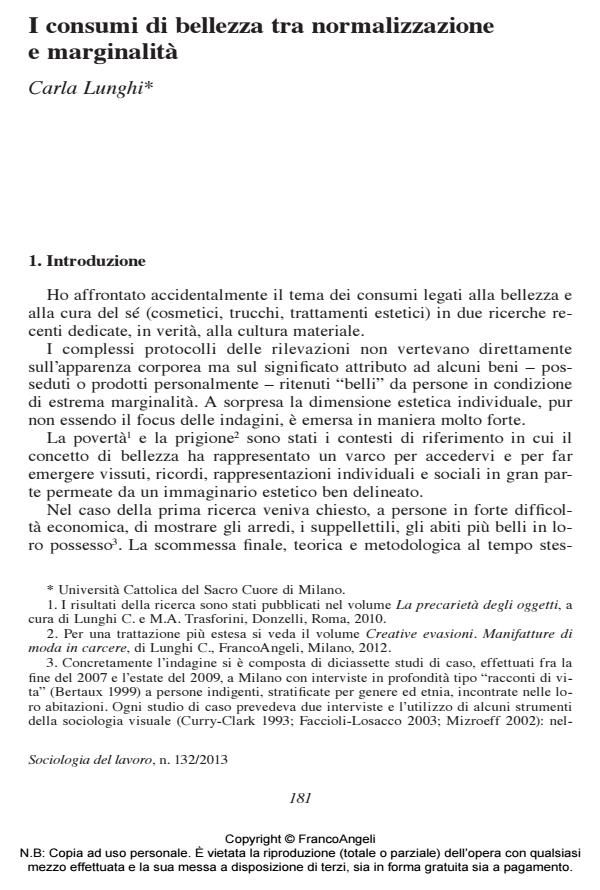Beauty consumption between standardization and social inclusion
Journal title SOCIOLOGIA DEL LAVORO
Author/s Carla Lunghi
Publishing Year 2013 Issue 2013/132
Language Italian Pages 11 P. 181-191 File size 252 KB
DOI 10.3280/SL2013-132014
DOI is like a bar code for intellectual property: to have more infomation
click here
Below, you can see the article first page
If you want to buy this article in PDF format, you can do it, following the instructions to buy download credits

FrancoAngeli is member of Publishers International Linking Association, Inc (PILA), a not-for-profit association which run the CrossRef service enabling links to and from online scholarly content.
The author has examined the results of two qualitative researches carried out in two marginal contexts: poverty and jail. The body and self-care issues, although aren’t the main focus of the surveys, have emerged strongly, revealing a collective imagination with standardized aesthetic and stabilise power. Thinness, youth, dress fashionably, the clever use of make up and beauty treatments are the most coveted consumer consumption and, at the same time, in conflict with the economical and existential difficulties of almost all interviewed. However, they are also perceived as important skills for social inclusion, in contrast to the "normal free world" where are used as tools of distinction and differentiation. The women interviewed do not want to be more beautiful than other women but they want to be beautiful just like the others for achieving a normality, very often denied by their difficult living conditions.
Keywords: Beauty, poverty, prison, body, fashion, social inclusion
Carla Lunghi, I consumi di bellezza tra normalizzazione e marginalità in "SOCIOLOGIA DEL LAVORO " 132/2013, pp 181-191, DOI: 10.3280/SL2013-132014